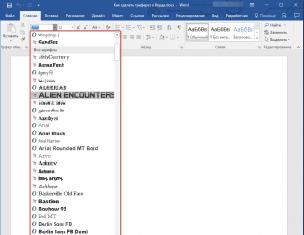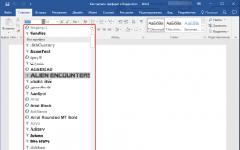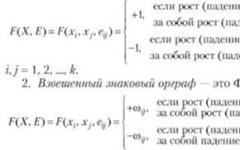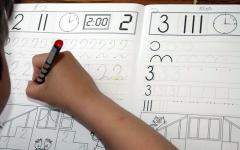A simple machine is a mechanical device that consists of a minimum of moving parts but yet can create an improvement of the output over the input. The improvement could be creating a mechanical advantage or simply changing the direction of the output. Mechanical advantage is the increase of force, distance or speed from the input value.
Around the 16th century, the classic list of simple machines was determined. The list consisted of the lever, wheel and axle, pulley, inclined plane, wedge, and screw.
These simple machines can be broken into three classifications: lever simple machines, rotating simple machines, and inclined plane simple machines.
Questions you may have include:
- What do lever simple machines do?
- What do rotating simple machines do?
- What do inclined plane simple machines do?
This lesson will answer those questions. Useful tool: Units Conversion
Lever simple machines
The lever simply consists of a rod or board that pivots on a fulcrum, creating a mechanical advantage or a change in direction.
The lever is a classic simple machine that achieves a mechanical advantage according to the ratio of the output or load arm of the lever divided by the input or effort arm.
The mechanical advantage of a lever can concern force, distance, or speed of the output.
The efficiency of the lever is very high, since the loss due to friction at the fulcrum is low.
Rotating simple machines
Rotating simple machines include rollers, wheel and axle, crank, and pulley.
Rollers
The wheel or roller by itself can make it easier to move objects by overcoming friction.
Wheel and axle
When an axle is added to a wheel, a torque on the axle increases the speed of the outer surface of the wheel. Likewise, turning the wheel from its outer edge increases the force applied from the axle.
Crank
A crank is like a wheel and axle. You can push on the handle of a crank, and it will create a twisting force or torque on the axle. This is a variation of the wheel and axle.
Pulley
A pulley is a wheel and axle, that uses a rope to lift objects. A major purpose of a pulley is to change the direction of the input force. You can pull down one a pulley rope, and the rope will lift the object upward.

Complex set of pulleys
A complex set up pulleys, such as a block-and-tackle configuration, can result in a mechanical advantage. The question is that if it is a complex set, is it still a simple machine? Probably not.
Inclined plane simple machines
Variations of an inclined plane include a ramp, wedge, and screw.
Ramp
The inclined plane or ramp makes raising a weight to a given height easier, according to the angle of the incline. Unfortunately, the resistive force of friction from sliding the object on the ramp can negate the mechanical advantage.
Variations of the inclined plane are the wedge and screw.
Wedge
Although a wedge is considered a simple machine, it is really a special application of an inclined plane.
Screw
The screw is really an inclined plane that is wrapped around a shaft. Turning the shaft around its central axis transforms rotational motion and torque into axial motion and force.
A screw can also act like a wedge, forcing itself into a softer material.
Summary
Simple machines usually exchange using a smaller force over a greater distance to move a heavy object over a short distance. The work required is the same, but the force required is less. The are also simple machines that help to reduce the resistance of friction or such.
Make it your mission to benefit your community
Topic: Simple Machines PSSA: 3.4.7.C / S8.C.3.1
Objective: TLW compare different types of simple machines. TLW compare different types of simple machines. TLW explain the difference between a simple machine and a compound machine. TLW explain the difference between a simple machine and a compound machine.

MI #1: Levers A lever is a simple machine that has a bar that pivots on a fixed point called a fulcrum. A lever is a simple machine that has a bar that pivots on a fixed point called a fulcrum. Levers are classified based on the location of the input force, load, and the fulcrum. Levers are classified based on the location of the input force, load, and the fulcrum.

MI #2: Classes of Levers First class levers have the fulcrum between the input force and the load. First class levers have the fulcrum between the input force and the load. - Includes see-saws Second class levers have the load between the input force and the fulcrum. Second class levers have the load between the input force and the fulcrum. - Includes wheelbarrows Third class levers have the input force between the load and the fulcrum. Third class levers have the input force between the load and the fulcrum. - Includes hammers and fishing poles

Mi #3: Pulleys A pulley is a simple machine that has a grooved wheel that holds a rope or a chain. A pulley is a simple machine that has a grooved wheel that holds a rope or a chain. There are three types of pulleys; fixed, movable, and block and tackle. There are three types of pulleys; fixed, movable, and block and tackle.

MI #4: Wheel and Axle A wheel and axle consists of two circular objects of different sizes that rotate on the same axis. A wheel and axle consists of two circular objects of different sizes that rotate on the same axis. The axle rotates a smaller distance than the wheel, which results in a greater output force. The axle rotates a smaller distance than the wheel, which results in a greater output force.

MI #5: Inclined Planes An inclined plane is a straight slanted surface. An inclined plane is a straight slanted surface. A wedge is a pair of inclined planes that move. A wedge is a pair of inclined planes that move. A screw is an inclined plane wrapped around a cylinder. A screw is an inclined plane wrapped around a cylinder.

MI #6: Compound Machines A compound machine is a machine that is made of two or more simple machines working together. A compound machine is a machine that is made of two or more simple machines working together. Because compound machines have more moving parts, their mechanical efficiency is typically low. Because compound machines have more moving parts, their mechanical efficiency is typically low.

So What…? Real Life Application Machines make work easier, so it is important to understand the different types of simple machines. Machines make work easier, so it is important to understand the different types of simple machines.

The wheel and axle , the inclined plane , the wedge , the , and the screw . Several of these simple machines are related to each other. But, each has a specific purpose in the world of doing work.
There are special tools for measuring the force necessary to move an object. These are known as force meters. They use a spring and a hook to determine how much pull is required to slide an object up an inclined plane. Really very simple to use.
Compound Machines

Simple machines can be combined together to form compound machines. Many of our everyday tools and the objects we use are really compound machine . Scissors are a good example. The edge of the blades are wedges. But the blades are combined with a lever to make the two blades come together to cut.
A lawnmower combines wedges (the blades) with a wheel and axle that spins the blades in a circle. But there is even more. The engine probably works in combination of several simple machines and the handle that you use to push the lawnmower around the yard is a form of a lever. So even something complicated can be broken down into the simplest of machines.

Take a look around you — can you figure out what simple machines make up a can opener, the hand cranked pencil sharpener, the ice dispenser in the refrigerator or the stapler? Just be careful, though. In our modern times, many things rely on electronics and light waves to function and are not made of simple machines. But even then, you may be surprised. The turntable in your microwave oven is a wheel and axle. The lid to the laptop is connected to the pad by a hinge or lever.
Simple machines may be simple — but they are simply everywhere.
A Word or Two About Rube
Rube Goldberg was a famous cartoonist who lived between 1883 and 1970. His life was spent creating art and sculptures, but his most famous work was for his "inventions." These inventions were a series of simple machines put together in a complex fashion to accomplish something very simple, but it took many steps to get there. Contests have been run for many years since Mr. Goldberg first created his unique ideas. In the contests people try to come up with new ways to turn on a light, or start a toaster using these combinations of the simple machines to wow judges and audiences for their unique way of doing these simple tasks.

Rube Goldberg machines are fun to watch and to build. Visit this site for some fun — see if you can identify each of the simple machines as they work together in this animation of a Rube Goldberg gadget designed to get this guy out of bed in the morning. Click .
For more information about Rube Goldberg"s life and his art, click .
М.В. Рудакова (г.Иркутск)
Методическая разработка занятия по теме «Machines and Work» (Машины и работа)
Аннотация
Данное занятие проводится при изучении темы: «Машины и работа» со студентами III курса (1 семестр) по специальности 110809 «Механизация сельского хозяйства ». Занятие разработано по учебнику Бгашев В.Н., Долматовская Е.Ю. Английский язык для студентов машиностроительных специальностей. Студенты уже прошли базовый этап подготовки по дисциплине, и уже достаточно владеют лексическим и грамматическим материалом для изучения программы английского языка профессиональной направленности. Занятие предназначается для продвинутого этапа подготовки по английскому языку и обеспечивает коммуникативную профессиональную направленность обучения. По данной теме студенты уже изучили основной лексический и грамматический материал, поэтому тип занятия - систематизация и обобщение знаний . Все этапы занятия построены на единых методических принципах, развивают основные виды иноязычной речевой деятельности, формируют межкультурные компетенции будущих специалистов. На занятии используется технология коммуникативного обучения и технология обучения в сотрудничестве, а также технология критического мышления. Для реализации поставленной цели применяются познавательные методы мотивации, волевые методы (самооценка и коррекция, рефлексия поведения), а также метод мозгового штурма. На этапе построения проекта студентам предлагается использовать, как прием, ментальную карту (Mind Map). Особое внимание было уделено изучению лексического аспекта, так как обучающийся должен уметь переводить тексты профессиональной направленности, общаться на профессиональные темы; самостоятельно совершенствовать и пополнять словарный запас.
Все этапы занятия способствуют развитию речевой, языковой и профессиональной компетенции и достижению поставленных воспитательных и образовательных целей. Предметом оценки служат умения и знания, предусмотренные ФГОС по дисциплине Английский язык , направленные на формирование общих и профессиональных компетенций.
Тема занятия: «Machines and Work» (Машины и работа)
Цель занятия: создать условия для развитиякоммуникативной компетенции.
Задачи занятия: образовательная: формировать лексические навыки говорения, развивать умения смыслового чтения (просмотровое, поисковое, изучающее); развивающая: развивать память, внимание, мышление, логическое мышление и языковую догадку, учить анализировать, обобщать, группировать); воспитательная; воспитывать познавательный интерес в изучении иностранного языка, формировать навыки групповой работы.
Формируемые компетенции: ОК 1. Понимать сущность и социальную значимость своей будущей профессии, проявлять к ней устойчивый интерес.
ОК 3. Принимать решения в стандартных и нестандартных ситуациях и нести за них ответственность.
ОК 4. Осуществлять поиск и использование информации, необходимой для эффективного выполнения профессиональных задач, профессионального и личностного развития.
ОК 5. Владеть информационной культурой, анализировать и оценивать информацию с использованием информационно-коммуникационных технологий.
ОК 6. Работать в коллективе и команде, эффективно общаться с коллегами, руководством, потребителями.
Тип занятия: систематизация и обобщение знаний.
Межпредметные связи: русский язык, физика, механика, машины, механизмы.
Оборудование занятия: учебник, проектор, компьютер, экран, презентация, раздаточный материал, листы ватмана, фломастеры, магниты.
Формы работы: индивидуальная, групповая, фронтальная
Этапы занятия. Формы работы
Содержание занятия. Возможные методы и приемы выполнения
Основные виды учебной деятельности
УУД, формирующиеся на данном этапе
Деятельность учителя
Деятельность обучающихся
Этап мотивации учебной деятельности
Организационный момент
(2 мин.)
T. Good morning, students! I`m glad to see you. It is really fine day today, isn’t it? How are you today? What about the weather today? Is it fine? Let`s start our lesson.
Учитель приветствует студентов, проверяет их готовность к занятию.
Студенты включаются в иноязычное общение, реагируя на реплики учителя, согласно коммуникативной задаче.
Личностные: адекватная мотивация учебной деятельности; формирование мотивации к изучению иностранного языка; формирование положительного отношения к занятию иностранного языка.
Регулятивные: самооценка готовности к уроку.
Коммуникативные: слушать и реагировать на реплику адекватно речевой ситуации.
Лексико-фонетическая зарядка
(7 мин.)
Electricity, effort, motion, distance, rate, weight, horsepower, watt, kilowatt, force, work wind, water, steam, petroleum, prime mover, windmill, turbine, generator, steam engine, internal combustion engine, electric motor
Учитель предлагает студентам проговаривать слова для развития произносительных навыков.
Студенты проговаривают слова, которые в дальнейшем они смогут использовать в своей речи, работают над произношением. Соотносят графический и звуковой образ английских слов.
Регулятивные: осуществлять самоконтроль правильности произношения.
Познавательные: извлекать необходимую информацию из прослушанного.
Речевое погружение
(7 мин.)
Т . Thank you! Great! Now, students look at the screen, here you can see the car. Let`s try to name the parts of this car and describe them using the model: This is/these are… . N+ is/are made of…
For example: this is a windscreen. The windscreen is made of glass. ( Приложение 1 )
Учитель организует погружение в иноязычную среду, закрепляет навыки употребления знакомых лексических единиц и грамматической модели.
Студенты, используя ранее изученные лексические единицы, описывают автомобиль, называя части автомобиля и материалы, из которых они сделаны.
Коммуникативные: слушать и осознанно воспринимать речь других студентов, осуществлять корректировку неправильных ответов.
Ознакомление с темой занятия, сообщение целей
(2 мин.)
Т . Students, as you know a machine is a device that transmits and changes force or motion into work. A machine can be very simple or very complex. Terms like work, force, and power are closely connected with machines. I think you`ll try to guess what our lesson will be about. Well, what shall we do today? Yes, you`re right, we`ll speak about machines and work. We must give the definitions of the words - work, force, power and connect them with «work» and «machines». Is the topic interesting for you?
Учитель дает возможность студентам самостоятельно определить тему занятия, цели и что для этого необходимо.
Студенты самостоятельно определяют тему и цели занятия с помощью опорной лексики.
Познавательные: уметь адекватно, осознанно и произвольно строить речевое высказывание в устной речи.
Регулятивные: определять цель учебной деятельности с помощью учителя; планировать свои действия для реализации задач.
II .Этап актуализации опорных знаний
Лексическая работа
(10 мин.)
T. 1) To begin with I propose you to divide the following words into three groups, those which describe: 1)basic terms of physics and mechanics; 2)energy sources; 3)mechanisms, machines. ( Приложение 2)
2) The following verbs are often related with basic terms of physics and mechanics. Now, students try to make up word combinations using these verbs: to produce, to transform, to supply, to result in, to exert, to set, to perform, to result from, to measure…in. Model: to transmit motion/force ( Приложение 2)
Учитель активизирует знакомую лексику, корректирует ответы студентов по необходимости.
Студенты самостоятельно выполняют задания, используя ранее изученные лексические единицы. Свои ответы заносят в таблицу. Проверка и коррекция выполненного задания.
Коммуникативные: осознанное построение речевых высказываний, рефлексия.
Регулятивные: исследование условий учебной задачи, обсуждение способов решения.
Познавательные: аргументация своей точки зрения.
Говорение, предугадывание
(4 мин.)
T. Look at the screen, here you can see the terms. The task is to match each one with its correct definition.
(Приложение 3)
Учитель проверяет правильность выполнения задания.
Студенты подбирают к каждому термину соответствующее ему определение.
Логические:
Познавательные: уметь анализировать информацию.
III . Этап самостоятельной работы с самопроверкой по образцу
Смысловоечтение
(14 мин.)
T. Well done. Let`s continue our lesson. Read the text “Machines and work”, try to focus on its essential facts, and choose the most suitable heading below for each paragraph: 1) Prime movers 2) Definition of “machine” 3) The relationship between «work» and «force» 4) Power and its measures.
You also should find the definitions of basic terms connected with «machines» and «work». Text A is on page 192 .
Учитель информирует обучающихся об алгоритме работы над чтением.
Студенты читают текст с пониманием основного содержания, подбирают заголовки к абзацам и находят определения основным понятиям, связанными с «работой» и «машинами».
Логические: развивать умения сосредоточить внимание, догадку и логику.
Регулятивные: совершенствовать навыки смыслового чтения, используя лексику урока.
Познавательные: развивать смысловое чтение; осуществлять поиск и выделение необходимой информации; уметь структурировать знания.
Самопроверка и самооценка
(5 мин.)
T. Time is running. Let`s check your tasks.
Учитель контролирует, как студенты аргументируют свою точку зрения, корректирует их ответы.
Студенты обсуждают прочитанный текст, дают определения основным понятиям, связанными с «работой» и «машинами».
Регулятивные: уметь правильно оценивать результаты своей работы и одногруппников.
Коммуникативные: уметь слушать друг друга для восприятия необходимых сведений и поддерживания беседы.
Говорение. Работа в группах
(12 мин.)
T. Well, let`s go on. Now, students, we`ll have a group work. I will give you some questions about the text and you should answer them. ( Приложение 4)
Учитель делит студентов на две группы и дает вопросы для обсуждения.
Студенты делятся на две группы и вытягивают вопросы по прочитанному тексту. Обсуждают вопросы и ответы на них. Используют готовые речевые материалы для оформления ответов.
Коммуникативные: участвовать в работе группы, осуществлять взаимоконтроль и взаимопомощь; проявлять активность во взаимодействии для решения общих задач.
Познавательные: уметь сопоставлять и отбирать информацию из текста, осознанно строить речевое высказывание в устной форме.
Личностные: формировать навыки сотрудничества, проявлять инициативу.
IV. Этап построения проекта
Чтение с целью извлечения специальной информации (работа в группах)
(15 мин.)
T. Students, your task is to give a short report about «Machine, Work, Power».
Учитель ставит задачу перед группами приготовить сообщение «Машина, работа, сила» с использованием активного словаря, который был составлен во время лексической работы на этапе актуализации опорных знаний. Учитель предлагает студентам лист ватмана для оформления своего сообщения.
Студенты составляют ментальную карту, используя информацию из текста и таблицу (Приложение 2), распределяют, кто и о чем будет говорить.
Коммуникативные: участие в работе группы: распределение обязанностей, планирование своей части работы, осуществление взаимоконтроля, взаимопомощь; оформление своих мыслей с учетом учебной задачи.
Познавательные: умение анализировать, группировать факты, строить логические рассуждения; умение выделять главные факты, опуская второстепенные.
Личностные: проявлять инициативу и самостоятельность, стремиться к совершенствованию собственной речевой культуры.
Регулятивные: принимать и сохранять учебную задачу, сравнивать результаты соей работы с результатами других.
V . Этап проверки реализации построенного проекта
Проверка проекта
(8 мин.)
T. So, it`s time to begin to represent your projects.
Учитель определяет уровень усвоения необходимых знаний.
Студенты рассказывают об основных понятиях физики и механики, механизмах и источниках энергии и показывают их взаимосвязь с машинами и работой. Свои сообщения сопровождают демонстрацией проекта на листе ватмана (Mind Map).
Познавательные: умение осознанно строить речевое высказывание в устной форме, совершенствовать речевые навыки.
Коммуникативные: формировать собственное мнение и позицию; аргументировать свою точку зрения; участвовать в работе группы.
IV . Этап рефлексии учебной деятельности на занятии
Подведение итогов работы
(1,5 мин.)
T. Now we come to the end of the lesson. Do you remember the topic? What did we study today? What was new for you? Let’s review the new vocabularies in chain.
Учитель задает вопросы. Выставляет оценки за занятие, комментирует, мотивирует на дальнейшую успешную работу.
Студенты отвечают на вопросы учителя и высказывают свое мнение.
Регулятивные: умение контролировать свою деятельность по результатам, умение адекватно понимать оценку учителя, одногруппников.
Личностные: умение оценивать свою деятельность; проявлять стремление к совершенствованию собственной речевой культуры в целом.
Рефлексия
(1,5 мин.)
T. Do you like our lesson? Are you in a good mood at the end of the lesson? Do you like your work today?
Учитель приглашает студентов высказать свое мнение об уроке.
Студенты строят высказывания, выражающие мнение, отвечают на вопросы на учителя. Осваивают формы личностной рефлексии. (Приложение5)
Домашнеезадание
(1 мин.)
T. Your homework is the ex.26, p.203. You should fill the table.
Учитель объясняет, что надо сделать в процессе домашнего задания.
Студенты записывают домашнее задание.
Выводы
Занятие английского языка на III курсе по теме «Machines and Work» (Машины и работа) является занятием систематизации и обобщения знаний по данной теме.
На этапе организационного момента учитель создает общий положительный настрой на предстоящее занятие, помогает обучающимся организовать собственное учебное пространство. На данном занятии реализуются принципы личностно-ориентированного, развивающего обучения, осуществляется самооценка и взаимооценка обучающимися. Деятельность учителя в большей степени представлена в виде организации работы и помощи обучающимся в различных учебных ситуациях.
На основных этапах занятия используется системно-деятельностный и коммуникативный подходы. При подведении итогов и рефлексии предусмотрено обсуждение деятельности студентов на уроке, само- и взаимооценивание результатов работы, посредством чего обучающиеся овладевают навыками анализа, оценки своей работы и других, умением участвовать в диалоге, уважительно высказываться о деятельности других.
В ходе занятия (наряду с учебными) решались и жизненно-практические задачи, использовался жизненный опыт обучающихся с целью развития их познавательной активности, самостоятельности.
Список использованной литературы
Бгашев В.Н., Долматовская Е.Ю. Английский язык для студентов машиностроительных специальностей. М.: Астрель АСТ, 2013. 381 с.
Дубинина В.Г . Personality (Личность)//Английский язык. Все для учителя. 2014. №1. С.14-20.
Интернет-ресурсы - Википедия. свободная энциклопедия.
Чернухина А.Е. Англо-русский технический словарь. М.:ОНИКС, 1997. 1026 с.
Приложение 1
Let`s try to name the parts of this car and describe them using the model: This is/these are… . N+ is/are made of…
For example: this is a windscreen. The windscreen is made of glass
Bonnet – капот
Wing mirror – боковое зеркало
Windscreen – лобовое стекло
Rear-view mirror – зеркало заднего вида
Windscreen wiper – «дворник»
Door – дверь
Boot – багажник
Tyre – шина
Wheel – колесо
Headlight – фара
Bumper – бампер
Licence plate – номерной знак
Indicator – указатель поворота
Приложение 2
1) Divide the following words into three groups, those which describe: 1)basic terms of physics and mechanics; 2)energy sources;
3)mechanisms, machines:
Electricity, effort, motion, distance, rate, weight, horsepower, watt, kilowatt, force, work wind, water, steam,
petroleum, prime mover, windmill, turbine, generator, steam engine, internal combustion engine, electric motor
2) The following verbs are often related with basic terms of physics and mechanics. Try to make up word combinations using these verbs: to produce, to transform, to supply, to result in, to exert, to set, to perform, to result from, to measure…in. Model: to transmit motion/force.
Active vocabulary
application
Nouns and combinations with the nouns
Verb combinations
1. Basic terms of physics and mechanics
electricity
effort
motion
distance
rate
weight
horsepower
watt
kilowatt
force
work
to produce electricity
to exert effort
to set in motion
to result in motion
to hold up the weight
to exert force
to produce work
to perform work
to result from
2. Energy sources
wind
water
steam
petroleum
3. Mechanisms and machines
Prime mover
windmill
turbine
generator
steam engine
internal combustion engine
electric motor
Приложение 3
Match the term with its correct definition:
Machine
the rate at which work is performed.
Prime mover
a device that uses force to accomplish something.
Force
an effort that results in motion or physical change.
Work
a machine whose input is natural source of energy.
Power
a combination of the force and the distance through which it is exerted.
Приложение 4
Questions for the first group:
What is a simple definition of a machine? What is more technical
definition? What does this definition imply?
Describe some very simple machines. Name some complex machines.
What do we call machines whose is a natural source of energy? What natural
sources of energy do you know and what machines use them?
Why aren`t electric motors prime movers?
Questions for the second group:
What is force? Give some examples of force.
What is work? How can work be expressed mathematically?
Give an example.
What is power?
How is the rate of doing work usually given in the English-
Speaking countries? Why was the term invented?
In what terms is power measured in the metric system?
Приложение 5

Simple machines are tools that make work easier. They have few or no moving parts.These machines use energy to work. There are six types of simple machines . The six types of simple machines are used in our daily life. Simple machines convert a smaller amount of force exerted over a larger distance to a greater amount of force exerted over a shorter distance, or vice versa. The concept of simple machine was introduced by the Greek philosopher Archimedes the 3rd century.
There are six types of simple machines. The six types of simple machines are
- Wedge
- Lever.
Pulley is wheels and axles with a groove around the outside
A pulley needs a rope, chain or belt around the groove to make it do work
Examples: Flag post, Elevator, Window blinds, Crane, Winch.
A screw is an inclined plane wrapped around a shaft or cylinder.
The inclined plane allows the screw to move itself when rotated
Examples: Screw lid jar, drills, door lock, meat grinder, brace and bits,
3) Wedge:
A wedge is used to split an object through the application of force. It is made up of two inclined planes which meet to form a sharp edge. Wedges are used to split things.
Examples: Knives, axe. Forks, pin, chisels.
An inclined plane is a flat surface that is higher on one end, which makes it easier to move heavy objects to a certain height.
Examples: Roller coaster, stirs, sloping roads, ramps, boat propeller,
The wheel and axle is made up of two circular objects. The wheel is the larger object which turns around the smaller object the axle. The axle is a rod that goes through the wheel which allows the wheel to turn,
Examples: Door knobs, Egg beater, Steering wheels, door knobs, pencil sharpener. Gears are a form of wheels and axles
6) Lever:
This is a is a bar rests on a turning point. The turning point is the fulcrum. An object the lever moves is the load. There are three kinds of levers, First order, Second order and third order.
In a first class lever the fulcrum is in the middle and the load and effort is on either side.
Example: see saw
In a second class lever the fulcrum is at the end, with the load in the Middle.
Example: wheelbarrow
In a third class lever the fulcrum is again at the end, but the effort is in the middle.
Example:
Pair of tweezers.
Advantage of using the six simple machines:
These six simple machines are used in day to day life. They make the work easier for us. Simple machines are being used hundreds of years before. Even the great pyramids were build by using the simple machines. The inclined plane was used to move heavy stones for building the pyramids. Different combinations of these six simple machines can be used in the building of complex machines.
Sub Topics
The effort is the force applied to the machine.
The load is the force against which the machine does the work.
This ratio is a measure of the advantage that one obtains by using the machine. If a load of 40 N is moved by applying an effort of 10 N on the machine then the mechanical advantage of the machine is given by
Velocity Ratio (V.R)
The "corresponding distance" is the distance moved by the load in the same time as the distance moved by the effort.
The velocity ratio depends only on the design of the machine and is always same for a particular machine. The mechanical advantage on the other hand can vary for a particular machine as it depends on friction.
M.A., V.R. and efficiency have no units as they are ratios between similar quantities.
Effort: The force applied to the machine.
Load: The force against which the machine does the work.
Since the effort does the work on the machine and the load is worked upon by the machine, efficiency can also be expressed as
The efficiency is very often expressed as a percentage i.e.,
![]()
It should be noted that 100% efficiency is possible only for an ideal (imaginary) machine. Usually, for all practical purposes the efficiency of a machine is always less than 100%. This is because practical M.A. is always less than theoretical M.A. due to friction and the weight of the moving parts.









